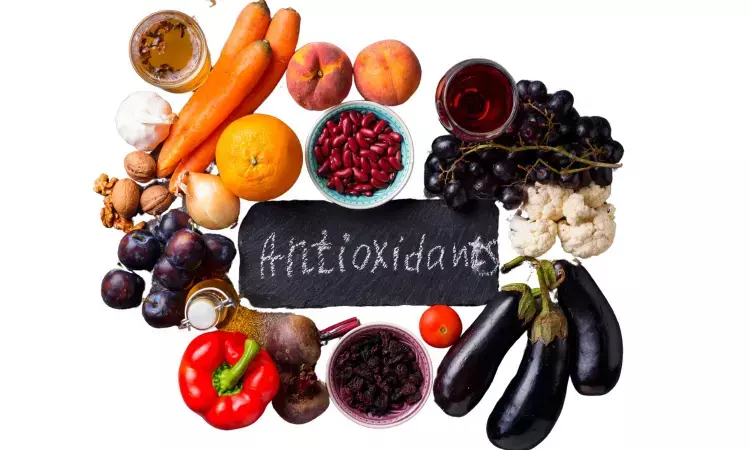- Home
- Medical news & Guidelines
- Anesthesiology
- Cardiology and CTVS
- Critical Care
- Dentistry
- Dermatology
- Diabetes and Endocrinology
- ENT
- Gastroenterology
- Medicine
- Nephrology
- Neurology
- Obstretics-Gynaecology
- Oncology
- Ophthalmology
- Orthopaedics
- Pediatrics-Neonatology
- Psychiatry
- Pulmonology
- Radiology
- Surgery
- Urology
- Laboratory Medicine
- Diet
- Nursing
- Paramedical
- Physiotherapy
- Health news
- Fact Check
- Bone Health Fact Check
- Brain Health Fact Check
- Cancer Related Fact Check
- Child Care Fact Check
- Dental and oral health fact check
- Diabetes and metabolic health fact check
- Diet and Nutrition Fact Check
- Eye and ENT Care Fact Check
- Fitness fact check
- Gut health fact check
- Heart health fact check
- Kidney health fact check
- Medical education fact check
- Men's health fact check
- Respiratory fact check
- Skin and hair care fact check
- Vaccine and Immunization fact check
- Women's health fact check
- AYUSH
- State News
- Andaman and Nicobar Islands
- Andhra Pradesh
- Arunachal Pradesh
- Assam
- Bihar
- Chandigarh
- Chattisgarh
- Dadra and Nagar Haveli
- Daman and Diu
- Delhi
- Goa
- Gujarat
- Haryana
- Himachal Pradesh
- Jammu & Kashmir
- Jharkhand
- Karnataka
- Kerala
- Ladakh
- Lakshadweep
- Madhya Pradesh
- Maharashtra
- Manipur
- Meghalaya
- Mizoram
- Nagaland
- Odisha
- Puducherry
- Punjab
- Rajasthan
- Sikkim
- Tamil Nadu
- Telangana
- Tripura
- Uttar Pradesh
- Uttrakhand
- West Bengal
- Medical Education
- Industry
Antioxidant diet may be beneficial for low back pain patients.

Approximately 37% of adults worldwide experience low back pain, which poses a significant economic burden on both individuals and society. According to the 2017 Global Burden of Disease Study, low back pain was the leading cause of productivity loss and the top contributor to years lived with disability in 126 countries. Oxidative stress is considered a crucial element in the intricate pathophysiological process and pathogenic mechanism of low back pain.
A recent study published in BMC Public Health found an inverse association between the composite dietary antioxidant index (CDAI) and low back pain prevalence, with gender differences influencing this association. The researchers recommended that antioxidants be studied in the dietary pattern and that caution be taken when interpreting the effects of individual antioxidant ingredients.
Adjusting dietary patterns can increase antioxidant biomarkers within the body, thereby reducing oxidative stress. CDAI is a reliable method for evaluating the dietary antioxidant capacity of daily diets.
This study analyzed 17,682 participants from NHANES. A weighted logistic regression model and restricted cubic spline (RCS) were used to investigate the association between CDAI and low back pain, with non-linear trends and cutoffs examined.
Key findings from the study are:
- There was no significant association between CDAI and low back pain, but it was significant in quartiles.
- Individuals in the highest quartile of CDAI exhibited a 11.7% lower likelihood of experiencing low back pain (OR = 0.883).
- RCS indicated a linear relationship between CDAI and low back pain.
- Based on Gender subgroup analysis, this negative association was significant in the female population with OR = 0.983.
- Females in the highest quartile of CDAI were 19.7% less likely to suffer low back pain.
- Changes in zinc and selenium per milligram were independently associated with low back pain, with ORs of 1.009 and 0.379, respectively.
Antioxidant diets should be studied in a dietary pattern context, the study suggests.
This study was based on NHANES data, making it more reliable and representative.
To the best of their knowledge, they added that this is the first study to investigate the association between CDAI and low back pain.
Study limitations include measurement errors, inaccuracies in assessing antioxidant components, bias, etc.
Reference:
Feng, C.et al. Association between different composite dietary antioxidant indexes and low back pain in American women adults: a cross-sectional study from NHANES. BMC Public Health 24, 147 (2024). https://doi.org/10.1186/s12889-024-17649-0
BDS, MDS in Periodontics and Implantology
Dr. Aditi Yadav is a BDS, MDS in Periodontics and Implantology. She has a clinical experience of 5 years as a laser dental surgeon. She also has a Diploma in clinical research and pharmacovigilance and is a Certified data scientist. She is currently working as a content developer in e-health services. Dr. Yadav has a keen interest in Medical Journalism and is actively involved in Medical Research writing.
Dr Kamal Kant Kohli-MBBS, DTCD- a chest specialist with more than 30 years of practice and a flair for writing clinical articles, Dr Kamal Kant Kohli joined Medical Dialogues as a Chief Editor of Medical News. Besides writing articles, as an editor, he proofreads and verifies all the medical content published on Medical Dialogues including those coming from journals, studies,medical conferences,guidelines etc. Email: drkohli@medicaldialogues.in. Contact no. 011-43720751


